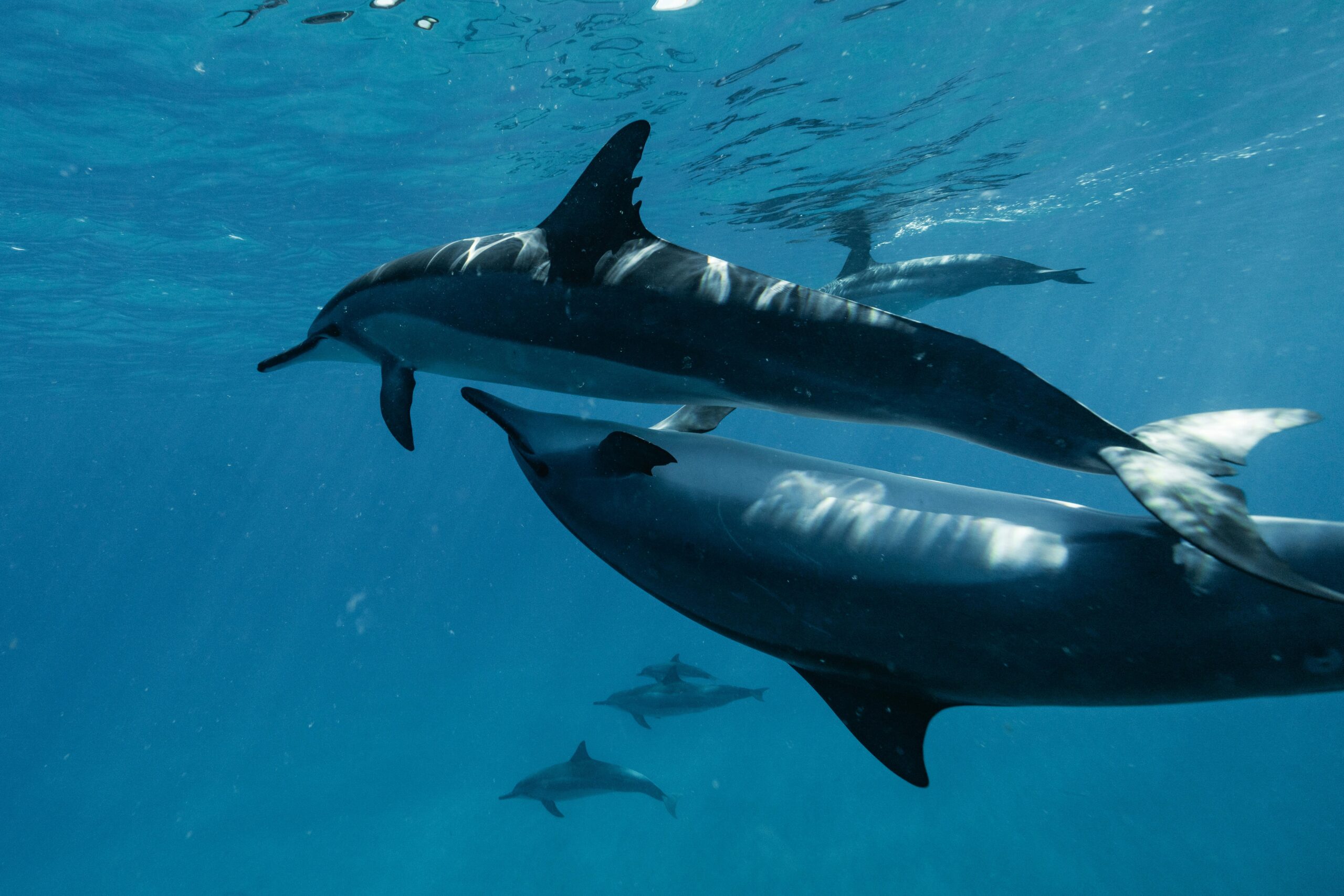The Gaia Hypothesis presents Earth as a self-regulating living system, where biological and geological processes intertwine to maintain conditions favorable for life.
🌍 The Revolutionary Vision of James Lovelock
In the 1970s, British scientist James Lovelock proposed something that sounded almost heretical to mainstream science: that Earth itself might function as a single, self-regulating organism. This wasn’t mysticism or New Age philosophy—it was a scientific hypothesis born from his work with NASA on detecting life on Mars. If we couldn’t easily identify life on other planets, Lovelock reasoned, perhaps we were looking at it wrong. Maybe life wasn’t just something that happened on a planet, but something that fundamentally shaped and regulated the planet itself.
Working alongside renowned microbiologist Lynn Margulis, Lovelock developed what would become known as the Gaia Hypothesis, named after the ancient Greek goddess of Earth. The core premise challenged conventional scientific thinking: organisms don’t simply adapt to their environment—they actively modify it, creating feedback loops that maintain conditions suitable for life’s continuation.
This revolutionary perspective transformed how scientists viewed Earth’s systems, suggesting that the atmosphere, oceans, climate, and crust aren’t just passive backdrops for life but active participants in a complex, interconnected system. The temperature regulation of our planet, the composition of atmospheric gases, even the salinity of oceans—all these might be influenced by life itself.
Understanding the Core Principles of Gaia Theory
At its heart, the Gaia Hypothesis suggests that living organisms interact with their inorganic surroundings to form a synergistic, self-regulating system that helps maintain conditions for life on the planet. This isn’t conscious or intentional—rather, it emerges from countless feedback mechanisms operating simultaneously across different scales and timeframes.
Consider oxygen levels in our atmosphere. For hundreds of millions of years, oxygen has remained at roughly 21% of atmospheric composition. This isn’t random chance. If oxygen levels rose just a few percentage points higher, forest fires would rage uncontrollably across the planet. If they dropped significantly, complex life would suffocate. Photosynthetic organisms produce oxygen, while other life forms consume it, creating a dynamic balance that has persisted through dramatic environmental changes.
Homeostasis on a Planetary Scale
The concept of planetary homeostasis represents one of Gaia theory’s most compelling aspects. Just as your body maintains a constant temperature around 37°C despite external conditions, Earth has maintained relatively stable temperatures for billions of years, even as the Sun’s energy output has increased by approximately 30% since life began.
This temperature regulation involves multiple interconnected systems. Marine algae produce dimethyl sulfide, which contributes to cloud formation, reflecting sunlight back into space and cooling the planet. Plants draw carbon dioxide from the atmosphere through photosynthesis, reducing greenhouse effects. Weathering of rocks, accelerated by microbial activity, removes CO2 from the atmosphere over geological timescales.
🔬 Scientific Evidence Supporting Gaia
When Lovelock first proposed his hypothesis, many scientists dismissed it as teleological—implying purpose or design in nature. However, decades of research have revealed mechanisms that support key aspects of Gaia theory, even if the full hypothesis remains debated.
The CLAW hypothesis, proposed in 1987, exemplifies Gaia-type feedback mechanisms. It suggests that marine phytoplankton regulate climate through dimethyl sulfide emissions. When oceans warm, phytoplankton populations may increase, producing more DMS, which seeds cloud formation, reflecting solar radiation and cooling the climate—a negative feedback loop that maintains stability.
Research into Earth’s ancient climate provides additional support. During the Archaean eon, 2.5 to 4 billion years ago, the Sun was significantly cooler, yet geological evidence shows liquid water existed. The “faint young Sun paradox” finds potential resolution in Gaia theory: early microbial life may have produced greenhouse gases like methane that compensated for reduced solar energy.
The Daisyworld Model
To demonstrate how Gaian regulation could emerge without conscious control, Lovelock created a computer simulation called Daisyworld. This simplified model features a planet populated only by black and white daisies. Black daisies absorb heat and warm their surroundings, while white daisies reflect heat and cool their environment.
As the simulation runs with varying solar energy inputs, something remarkable happens: the daisy populations self-regulate to maintain stable temperatures. When the planet gets too hot, white daisies flourish, cooling it down. When it gets too cold, black daisies dominate, warming things up. No intelligence or planning required—just natural selection and feedback loops.
Daisyworld proved that Gaian self-regulation could emerge from simple evolutionary processes, addressing critics who claimed the hypothesis required implausible foresight or purpose.
🌊 Ocean Systems and Biological Regulation
Earth’s oceans represent perhaps the most dynamic arena for Gaian processes. Covering 71% of the planet’s surface, oceans serve as massive carbon sinks, temperature regulators, and circulation systems that distribute heat around the globe.
Marine microorganisms play outsized roles in planetary regulation. Phytoplankton, microscopic photosynthetic organisms, produce roughly half of Earth’s oxygen while consuming vast amounts of carbon dioxide. When these organisms die, they sink to the ocean floor, sequestering carbon for millions of years in sedimentary rocks—a biological process that shapes atmospheric composition over geological timescales.
The ocean’s biological pump involves multiple trophic levels working together. Zooplankton consume phytoplankton, producing fecal pellets that sink rapidly, carrying carbon to deep waters. Fish and other marine animals participate in vertical migrations that transport nutrients and carbon between ocean layers. Coral reefs, kelp forests, and other ecosystems create local conditions that support diverse life while contributing to global biogeochemical cycles.
Salinity Regulation
Ocean salinity has remained remarkably stable at approximately 3.5% for hundreds of millions of years. Given constant mineral input from rivers and volcanic activity, you’d expect oceans to become increasingly salty over time. Yet they don’t. Biological processes again provide explanation: organisms extract minerals from seawater to build shells and skeletons, which eventually settle on the ocean floor, removing salts from circulation. Evaporite deposits in shallow seas further sequester salts, while hydrothermal circulation at mid-ocean ridges alters seawater chemistry.
Forests as Planetary Regulators 🌲
Forests represent terrestrial ecosystems with profound global impacts. Through photosynthesis, they remove billions of tons of carbon dioxide annually, storing carbon in wood, leaves, roots, and soil. The Amazon rainforest alone contains an estimated 150-200 billion tons of carbon.
But forests do more than sequester carbon. They influence local and regional climate through evapotranspiration—releasing water vapor that forms clouds and generates rainfall. Some researchers suggest forests create atmospheric rivers, moisture conveyor belts that transport water vapor thousands of kilometers inland. The destruction of tropical forests may therefore affect rainfall patterns far from deforestation sites.
Forest soils harbor immense biodiversity, with billions of bacteria, fungi, and other microorganisms per gram of soil. These communities decompose organic matter, release nutrients, and participate in complex chemical cycles. Mycorrhizal fungi form networks connecting trees, facilitating nutrient exchange and even chemical communication between plants—the famous “wood wide web.”
⚠️ Gaia Under Stress: Anthropogenic Impacts
The industrial age represents an unprecedented perturbation to Earth’s regulatory systems. Human activities now move more rock and soil than all natural processes combined. We’ve altered the composition of the atmosphere more rapidly than any event except major asteroid impacts. We’ve changed the chemistry of oceans, modified river flows, and transformed roughly half of Earth’s ice-free land surface.
Carbon dioxide levels have risen from approximately 280 parts per million before industrialization to over 420 ppm today—higher than any time in the last 3 million years. Methane, an even more potent greenhouse gas, has increased 150% over pre-industrial levels. These changes drive global temperature increases, currently tracking toward 1.5°C above pre-industrial averages with potentially 3-4°C increases by century’s end under high-emission scenarios.
Can Gaia Recover?
Gaia theory suggests Earth systems have substantial capacity for self-regulation, but this doesn’t mean they’re invulnerable. Paleoclimate records reveal past episodes where planetary regulation broke down temporarily, leading to dramatic environmental shifts. The Permian-Triassic extinction 252 million years ago eliminated 96% of marine species and 70% of terrestrial vertebrates, likely triggered by massive volcanic eruptions that overwhelmed normal regulatory mechanisms.
More recently, the Paleocene-Eocene Thermal Maximum, 56 million years ago, saw global temperatures spike 5-8°C over just a few thousand years, possibly triggered by methane releases from ocean sediments. Earth eventually restabilized, but the process took hundreds of thousands of years—timescales irrelevant to human civilization.
The critical question isn’t whether Earth will survive our impacts—it almost certainly will, given sufficient time. The question is whether Gaian regulation can maintain conditions suitable for complex life, including human civilization, or whether we’re pushing systems toward new equilibria incompatible with current ecosystems.
🔄 Feedback Loops: Positive and Negative
Understanding feedback mechanisms proves essential to comprehending both Gaia theory and climate science more broadly. Negative feedback loops stabilize systems, dampening changes and maintaining equilibrium. Positive feedback loops amplify changes, potentially leading to runaway effects or transitions to new stable states.
Negative feedbacks in Earth systems include:
- Increased plant growth removing more CO2 as atmospheric concentrations rise
- Enhanced weathering of silicate rocks consuming atmospheric CO2 at higher temperatures
- Cloud formation reflecting solar radiation when surface temperatures increase
- Ocean absorption of atmospheric carbon dioxide
Positive feedbacks that amplify change include:
- Ice-albedo feedback: melting ice exposes darker surfaces that absorb more heat, accelerating warming
- Water vapor feedback: warmer air holds more moisture, and water vapor is a greenhouse gas
- Permafrost thaw releasing methane and CO2, further warming the climate
- Forest die-back converting carbon sinks into carbon sources
Earth’s historical stability suggests negative feedbacks have generally dominated, but positive feedbacks can temporarily overwhelm regulation during transition periods, potentially leading to rapid, dramatic changes.
Modern Interpretations and Scientific Consensus
Contemporary Earth system science has largely absorbed useful aspects of Gaia theory while discarding more controversial elements. Few scientists would now argue that Earth functions as a single organism in any literal sense, but most acknowledge that biological processes fundamentally shape planetary conditions through complex feedback mechanisms.
The concept of the “Earth system”—recognizing interconnections between atmosphere, hydrosphere, lithosphere, and biosphere—represents Gaia’s lasting legacy. International research programs like the International Geosphere-Biosphere Programme explicitly adopted this systems perspective, studying how different planetary components interact and regulate environmental conditions.
Beyond Earth: Implications for Astrobiology
Gaia theory’s origins in astrobiology remain relevant as we search for life beyond Earth. If life substantially modifies planetary environments, we should look for atmospheric or surface signatures that deviate from purely physical-chemical equilibria. Earth’s oxygen-rich atmosphere, for instance, represents a massive disequilibrium—oxygen is highly reactive and would disappear rapidly without constant biological replenishment.
This insight guides searches for biosignatures on exoplanets. Astronomers now scan distant worlds for atmospheric compositions that suggest biological activity, applying principles derived directly from Gaia theory.
🌱 Living in Harmony With Planetary Systems
If Gaia theory teaches us anything, it’s that we’re not separate from Earth systems but deeply embedded within them. Every breath connects you to photosynthetic organisms across the planet. The water you drink has cycled through clouds, rivers, and living cells countless times. The carbon in your body has moved through rocks, atmosphere, oceans, and countless other organisms over billions of years.
This interconnectedness carries practical implications. Protecting biodiversity isn’t just about saving species for their own sake—it’s about maintaining the functional diversity that enables planetary regulation. Preserving forests, wetlands, and oceans protects vital carbon sinks and climate regulators. Reducing pollution protects the biogeochemical cycles upon which all life depends.
Indigenous peoples have long understood what Western science is rediscovering: humans thrive when working with natural systems rather than against them. Regenerative agriculture, ecosystem restoration, and nature-based climate solutions all represent practical applications of Gaian thinking—recognizing that supporting life’s regulatory functions ultimately supports human wellbeing.
The Road Ahead: Challenges and Opportunities 🚀
We stand at a unique moment in planetary history. For the first time, one species has become powerful enough to significantly disrupt Earth system regulation. Yet we’re also the first species capable of understanding these systems and potentially working to support rather than undermine them.
Climate action, biodiversity conservation, pollution reduction, and sustainable development all become more urgent when viewed through a Gaian lens. We’re not just protecting nature as something separate from ourselves—we’re protecting the regulatory systems upon which our own survival depends.
Emerging technologies offer new possibilities for monitoring and understanding Earth systems. Satellite networks observe planetary conditions in unprecedented detail. Artificial intelligence helps identify patterns in massive environmental datasets. Genetic technologies might help restore damaged ecosystems or enhance natural carbon sequestration.
Yet technology alone won’t suffice. Addressing anthropogenic impacts requires transforming economic systems, changing consumption patterns, and reimagining humanity’s relationship with the rest of nature. This cultural and philosophical shift may prove as important as any technological innovation.

🌏 Reimagining Our Place in the Living Earth
The Gaia Hypothesis, whether accepted in full or in part, fundamentally changed how we understand our planet. Earth emerges not as a dead rock with life clinging to its surface, but as a dynamic, integrated system where life and environment coevolve.
This perspective offers both comfort and challenge. Comfort in recognizing that Earth systems have remarkable resilience and self-regulating capacities. Challenge in acknowledging that we’re now testing the limits of that resilience and must take responsibility for our planetary impacts.
As we venture deeper into the Anthropocene epoch, defined by humanity’s dominant influence on Earth systems, Gaia theory reminds us that we’re participants in something far larger and older than ourselves. Our actions ripple through interconnected systems in ways we’re only beginning to understand. The wisdom lies not in trying to control these systems—an impossibility—but in learning to work harmoniously within them.
The secrets of nature that Gaia theory helps unlock aren’t just scientific curiosities. They’re essential knowledge for navigating our collective future, offering frameworks for understanding our impacts and inspiration for reimagining our relationship with the living Earth that sustains us all.
Toni Santos is an eco-spirituality researcher and planetary healing writer exploring how earth-based rituals, nature-centred philosophy and sacred ecology reconnect humanity with the living planet. Through his work on environment, consciousness and ritual, Toni examines how our relationship with Earth influences our awakening and actions. Passionate about land-wisdom, ritual practice and ecological integration, Toni focuses on how spiritual life can emerge from ecological awareness and how healing flows from land, water and community. His work highlights the union of ecology, mind and spirit — guiding readers toward a more grounded, relational, and sacred life. Blending ritual studies, environmental philosophy and ecological design, Toni writes about the human-earth story — helping readers understand how living systems, community and meaning intertwine in planetary healing. His work is a tribute to: The sacred connection between humanity and Earth’s living systems The power of ritual to rekindle land-memory and collective renewal The vision of ecology as sacred, relational and transformational Whether you are a ritual practitioner, ecological thinker or planet-healer, Toni Santos invites you to explore the path of planetary awakening — one ritual, one ecosystem, one transformation at a time.




